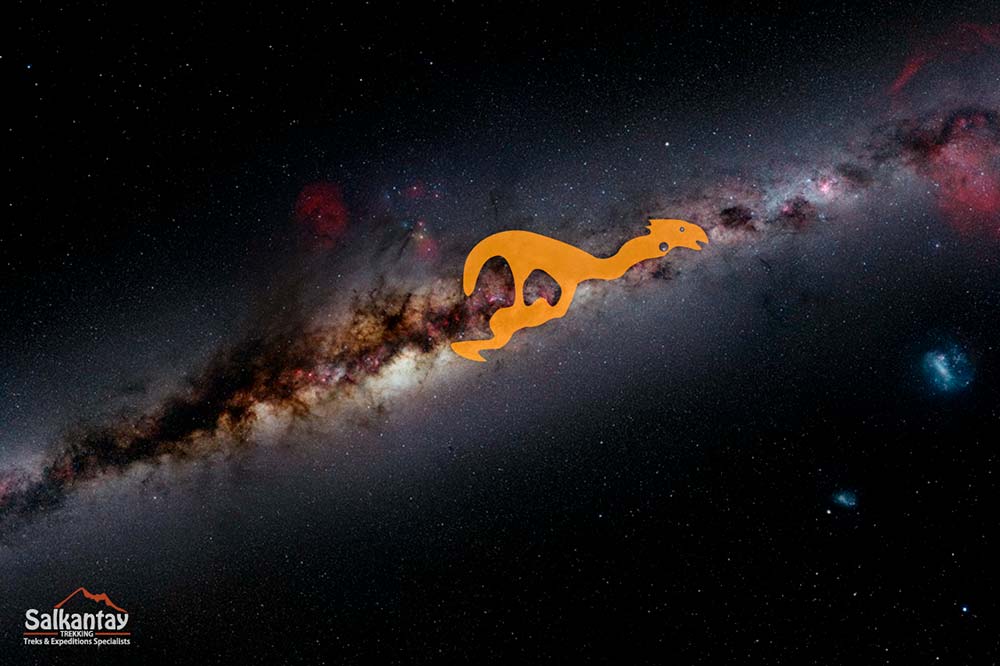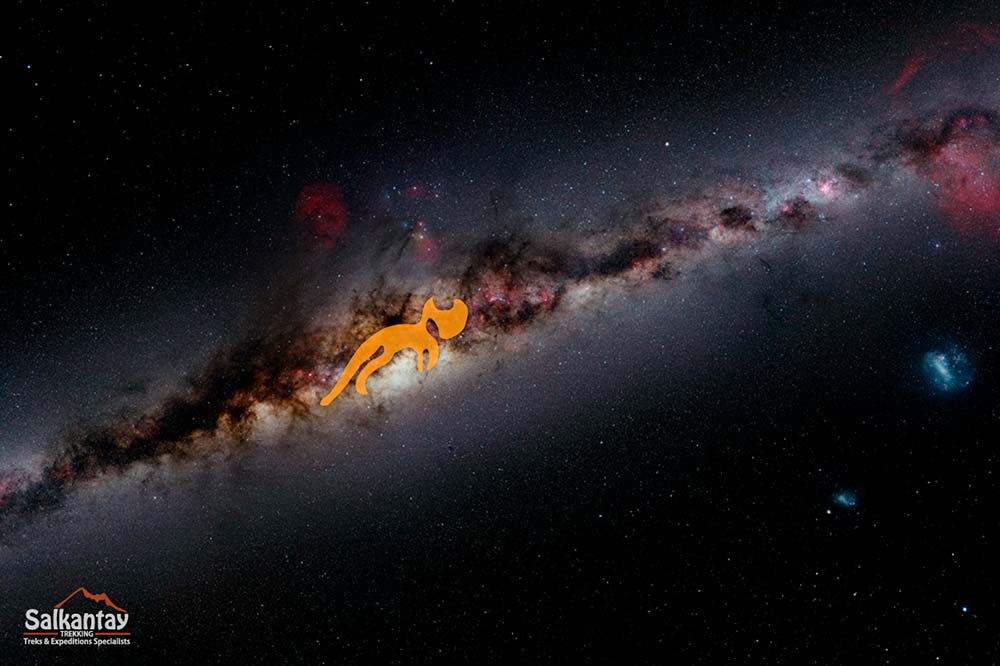After having seen so much of the city of Cusco, I feel certain that its biggest treasure is the timeless knowledge inherited by its inhabitants that never ceases to surprise me. One night, I met a man in the streets of the Historical Center of Cusco who sold traditional textiles in the middle of the public walkway, and he told me about the Inca Astronomy.
In South America, the Incas developed advanced and important astronomical thoughts. Due to their connection to nature, they perfectly understood the sky in order to perfectly understand agricultural cycles. Let’s not forget that agriculture has been the main axis of the Andean culture since their origin until today.
The Incas recognized at the sky several animals who walked over the Willka mayu (the name by which they knew the Milky Way in Quechua and whose literal translation is the Sacred River) and whose main function was to signal different stages in the agricultural cycle. These animals were found exactly in those dark spaces of the Milky Way. In this blog, we’ll learn a bit more about their locations and meanings of Inca Astronomy.
1. Lluthu (Partridge):
The partridge is a small bird that looks a bit like a chicken but with brown and gray plumage. This dark constellation (which in western inca astronomy is known as Bag of Carbon for its profound darkness) appears in the early morning sky in the month of October and stays until July, the time when the harvesting of different root vegetables ends in the Cusco region.
It’s also related to the end of the dry season and the arrival of the first rains in the agricultural cycle.

2. Hamp’atu (Toad):
In Andean culture, the toad symbolizes water and natural springs. They say it’s an animal greatly loved by Mother Earth (Madre Tierra) because she holds it inside of her while the toad hibernates and, besides that, this animal cooperates with field workers when plants first begin to sprout.
This dark constellation of the toad appears in the early morning sky toward the end of October when the croaking of the toads announces the first rains.

3. Mach’aqway (Serpent):
Serpents are very important animals in the Inca Astronomy. They say that they represent the ukhu pacha or the underworld. Besides that, they have an important relationship with water and the agricultural cycle. Just like with the toad, in spite of having a positive connotation in Andean culture, the serpent has adopted negative concepts with the arrival of western culture.
The head of the serpent constellation comes out in August and is hidden away again in February. Coincidentally, this in the time of year when serpents are most active in the Andean region. Another coincidence that happens in the sky and in agriculture on the earth is that the toad, partridge and snake are animals that assist in Andean agriculture to control diverse plagues.

4. Yana llama (Black Llama):
The great black llama is the biggest dark constellation that exists and maybe the most important. It can be recognized easily in the sky because its eyes are two very bright stars, known as Alpha and Beta Centauri, that can be found close to the Southern Cross. This dark constellation is made up of the bodies of two llamas: a mother and her cria.
The llama comes out in the sky in the month of November. There’s a myth that tells of a great black llama who came down to the earth to drink from all of the natural springs and rivers of the world and who also had to drink from the ocean because, otherwise, the world could flood. They also tell that the people on top of which the llama descended to earth were repaid with beautiful wool and great fortune and that this constellation cares for all other llamas on the earth.

5. Atoq (Fox):
The fox is one of the most striking and peculiar constellations in the Andean sky (Inca Astronomy), due to its two deep, red eyes. Some mention that the fox is found close to the cria of the great llama because he intends to eat it.
Others say he’s escaping from the constellation of the Shepherd who’s responsible for caring for the llamas of the sky. The fox is found close to the stars that form the tail of the western constellation Scorpio. The fox is an ambivalent character in traditional Andean stories and is also recognized for its relation with the crops.

6. Michiq (Shepherd):
It’s said that the shepherd takes care of the cosmic llamas to protect them from any threat. Because of this, he appears with open arms, as if he’s trying to scare the fox away.

Inca Astronomy in Cusco
Inca astronomy is truly complex and surprising. I later found out that besides the dark constellations, the Incas also found meaning in the stars; they also had their own starry constellations. Another incredible piece of data is that the Incas considered the river Vilcanota, which crosses through the Sacred Valley, to be a reflection of the Milky Way. Come to Cusco, and discover a different way of seeing the sky to understand reality.
For further information, we recommend to consult Erwin Salazar Garcés’s website. He is an important investigator of Andean ethnoastronomy and archaeoastronomy. Also we want to thank Jose Valencia García, a guide at the Cusco Planetarium, who shared with us his love for the stars and to @ccseyes for the main photo.













Leave A Reply